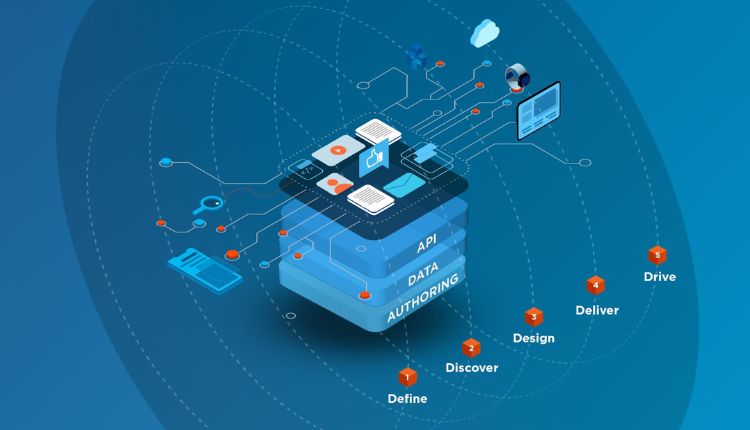As more and more companies utilize headless CMS to generate and disperse content, the necessity of internal documentation for headless content APIs has never been greater. These APIs are at the heart of omnichannel content delivery websites, mobile apps, smart displays, and internal dashboards. Yet without internal documentation that caters to how a team uses the API, problems arise in redundancies, miscommunication, and independent projects. Thus, creating a strategy to document the internal use of such an API will ensure that dev teams, content strategists, and product teams all benefit from a central approach to the documentation for onboarding and assured continuity when expanding digital efforts.
Document the Internal APIs as Products
One of the biggest rules about internal documentation is to treat your content APIs as products, even if they are not public-facing. An internal API does not mean it should be less documented or less structured; an internal team still needs to understand how endpoints are segmented, what content types exist, which fields are required, and how different models interact. A component-based CMS platform supports this mindset by enforcing structured, reusable content models that naturally align with well-documented APIs. Quality documentation reduces friction, increases velocity, and minimizes reliance on tribal knowledge or one-off conversations. When teams treat the documentation of a content API as a product, they foster more effective systems and the penalty for miscommunication and work redos decreases.
Document By Use Cases
Extending the idea of product creation where specific features determine functionality instead of giving exhaustive documentation of all endpoints that exist, internal documentation exists to help. For example, if developers consuming the API are working on a mobile app, they may require access to different data than if they’re building a landing page or a digital kiosk at an event. Thus, a table of contents with links like “Home Page,” “Product Page,” and “Navigation” lets consumers quickly see what they require for rendering. Furthermore, documenting by use cases facilitates new developers’ learning curves, encourages consistent patterns and applications between teams and other products.
Document Fields and Schemas
Content APIs headless return data that is structured based on what the CMS generated as content models; thus, teams need to know what is returned and what that content should look like. Each content type should be documented with corresponding schemas that indicate what the field name is along with the data types (is it a string/int/boolean/etc.), if it should be empty or required (validation rules), if it connects to other fields (is there a relationship), and formatting (is it supposed to be lower case?). If I understand that a hero banner has a title (string), image (asset reference), and CTA (linked object), I can create UI components accurately and with certainty. In addition, field based documentation ensures that content creators know what their fields should look like and what their inputs will appear on the front end for consistency across teams.
Access/Authentication Levels Decoded
Even in an internal environment, different teams may have different permissions/access while using the headless content API. As such, having documentation detail authentication methods static tokens, OAuth, JWT, scopes/roles required for read vs. write vs. publish goes a long way. Sample headers, where to manage tokens and where to find/retrieve credentials all promote integrations from the get go and prevent hold-ups due to access issues. In addition, the more information supplied around access, the easier it’ll be to adhere to audit and governance processes for secure, compliant and scalable content solutions.
Example Payloads/Queries
There is no better way to foster developer productivity than by offering useful examples. Internal API documentation can help facilitate example requests/responses expected (for getting a list of blogs, for getting a single content entry, for posting an edit). These payloads and the realities of what will be returned minimize guesswork and inform on optional fields, nested relationships and what complex content models look like in reality. Whether undertaken with REST or GraphQL, access to internal example queries, mutations and payloads help teams debug better and more effectively which fosters faster development cycles with less potential for implementation error.
Details for Change Management/Versioning
At the end of the day, your headless content API will change. Content models will expand, features will widen and new business use cases will come into play. Without internal documentation of how changes are made, where changelogs are maintained and whether/how deprecation happens for given fields/models, even the slightest change can break an external integration that relies on your internal headless content API. Therefore, make sure there is documentation around how changes are communicated to internal stakeholders, what’s the versioning standard (v1, v2, etc.) and how deprecation of fields/models occurs. A changelog allows teams to adjust before they’re broken by any change. Clear versioning enables internal APIs to grow in a controlled manner without worrying about regressions or broken deployments from small changes.
Developer Onboarding Includes Documentation
API documentation is a part of the developer onboarding process. Documentation is accessible to all new hires and stands to include an overview of the system architecture, key endpoints, content models and best practices. Links to interactive API explorers and sandboxing opportunities for development as well as team use cases allow new hires to acclimate faster and contribute faster. When teams don’t need to train new teammates and instead, can focus their talents elsewhere due to effective API documentation, knowledge transfer happens more effectively across the organization.
Ownership and Automation Keep Documentation Up To Date
Documentation that is outdated can be more dangerous than no documentation at all. Therefore, teams should take ownership of documentation and when possible, seek to automate pieces that will keep API documentation up to date. Swaggers/OpenAPI and GraphQL have the ability to create live documentation with no input from developers/team members besides the intent these tools take the API schema and create documentation in real time meaning should fields change or endpoints added, they are updated in the moment. In addition, assigning ownership over different aspects of the documentation creates responsibility. Absent ownership and automation, documentation can remain stagnant. Have a few members of the team QC the documentation quarterly to ensure as teams grow and change over time, no preventable knowledge gaps occur.
Documentation Should Include Governance and Best Practices
Internal documentation should also include information about governance. For instance, content governance belongs in API documentation for naming conventions, taxonomy and content lifecycle practices. This will ensure consistency for those types of undertakings that require the efforts of multiple teams over time. When APIs include best practices for content governance within its own documentation, access to resources makes compliance more likely. Therefore, effective documentation serves not only as a valuable resource but also as a qualifier and operating necessity for the future.
API Documentation that Supports Designers and Content Teams
While API documentation is written with developers in mind, it has direct applications for content teams and designers alike. If API documentation includes images, a mapping of UI pieces and their nomenclature, an explanation of how certain fields of structured content contribute to specific layouts/campaigns, it gives non-development audiences a better understanding of how their work fits into the larger puzzle. When development and subsequent documentation serve to bridge the gaps between technical and creative aspects, teams collaborate more effectively and the user experience is better aligned with what’s going on under the hood.
Consistency via Internal Style Guides for APIs
Linguistic conventions for naming endpoints and fields, plural vs singular decision making in regards to models versus field hierarchies goes a long way in usability and expectations. Therefore, while some conventions will occur in the code itself camelCase or snake_case an internal style guide helps keep API fields legible and dependable as they grow. When these expectations are included as part of the API documentation, it keeps everyone in line with best practices and reduces friction within development especially if teams span geographical areas and/or product lines.
Interactive Documentation Creates Playfulness
Static documentation isn’t always sufficient for the rapidly evolving headless space. Therefore, the ability to utilize an API explorer or GraphQL playground helps query the API from within the documentation. Additionally, offering code snippets that developers/testers can use within the same domain helps create an interactive experience. These real-time exercises facilitate comfort and ease to integrate/share the APIs beyond mere static reference. Interactive documentation makes learning happen in real-time and more enjoyable.
Auditing Documentation Usage to Improve Value Over Time
Organizations can monitor documentation usage internally to evaluate its continued usefulness and effectiveness over time. Observing which endpoints are frequently accessed, where users are stuck in confusion, and which examples are most referenced allows teams to gauge and rank necessary revisions effectively. Furthermore, star ratings, comment fields, and other opportunities for user feedback and inquiries add even greater clarity to any shortcomings in accessibility. By assessing over time, documentation becomes a living part of the ever-growing and changing headless content universe and its stakeholders.
Conclusion: Building a Culture of Clarity Around Headless Content APIs
Well-documented internal headless content APIs are vital for efficient, scalable, collaborative content operations. Increasingly, today’s digital worlds operate on composable systems and omnichannel delivery; it’s no longer just a front-end world. Headless content APIs are the connective tissue between disparate content systems and their corresponding front-end delivery; they’re the modern developers’ secret weapon to render content across all conceivable platforms at warp speed. But beyond developers, it empowers non-developers content strategists, marketers, and designers to understand how to best render the information output without the need for coding knowledge or access to code that could potentially complicate their otherwise simple rendering efforts.
Where time zones and responsibilities are mixed and distributed teams are the new normal, well-documented APIs become the central source of truth for alignment and friction reduction. From defined endpoints to clear schema and authentication requirements to similarly-relevant real-world examples given to developers and business stakeholders, the endeavor to build out new content sources or adjust existing ones can happen without redundant training or reliance on personal knowledge scattered among a team. Developers can work relatively independently. Stakeholders are kept apprised without unnecessary digressions. New team members can onboard more easily.
The advantages of these endeavors thrive through diverse documentation methods. Documentation efforts allow for investment styles that welcome clarity, structure, and accessibility, reducing cognitive load and fostering organizational transparency. For example, systems that work best with internal documentation can be more easily debugged with a better understanding of the first time it happens, and additional features or adjustments become less of a pain when documentation warns developers of potential bumps in the road. When APIs are well documented, organizations can avoid severe latency issues grounded in disarray.
Furthermore, enhancements that come from quality internal documentation future-proof your headless architecture. When things change, content models change, APIs grow, or people and regions scale extensive documentation sidesteps disruption paint by the numbers cost of change. Extensive documentation advocates for flexible thinking when revisiting what’s done and goes a long way to ensure stakeholders are championed in whatever process improvement they require.
Thus, in this new age of composable and omnichannel delivery, internal API documentation is not about the developer. In fact, it involves everyone from foundational levels of engagement for ultimate success. Collaborative efforts are accomplished with accelerated innovation and awareness to support future rollouts of cohesive, quality content experiences at scale. Thus, the mastered effort stands in connection with mastering complexity instead of just keeping up with it.






